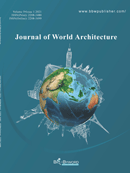Abstract
The majority of the literature on the transformation of cultural promotion space in old residential areas in the United States and abroad is written from the top-down perspective of God, such as architects, planners, developers, and even government officials, and only a few of them examine the designer’s work from the perspective of aborigines. To sample life and gain insight into human nature, find another means to be as near to the public as possible, listen to the voice of users, and conduct an in-depth examination of the freestyle works altered by the old residential districts through the “people’s architectural planner.”
References
Pang LB, Tian N. 2020, “Discussion on The White Pagoda Temple” 2020 Theme Activity: “Old City, New Street,” World Architecture, 11(024).
Sun Y, Zhu Y, 2020, A Preliminary Study on Scattered Space in Old Residential Areas from the Perspective of Daily Life ----- Taking Nanjing Wangfuyuan Community as an Example. Huazhong Architecture. 38(07), 62-68.
Zhao XM, Guo WW, Shi JR, 2017, Aging Appropriate Configuration Mode of Outdoor Environmental Elements in Residential Areas Based on the Types of Daily Activities of the Elderly Architecture Journal; February 2017, 48-52.
Jan Gail, 2002, Communication and Space. Communication and space. China Architecture Publishing. October 2002.
Jacobs J, 2005, The Death and Life of American Big Cities. Yilin Press; May 2005.
Maslow, 2007, The Theory of Human Motivation. China Renmin University Press.
Li B, 2008, Environmental Behavior Theory of Environmental Behavior and Its Extension. Architecture Journal, (2): 30-33.
